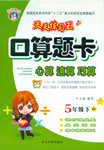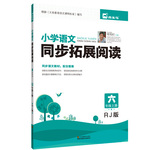题目内容
----- It’s too strange that these people should laugh when their relatives die.
----- That is the local custom ______ the seventeenth century.
A. dates back to B. dated back to
C. dating back to D. had dated back to
C
【解析】
试题分析:考查非谓语动词。date back to追溯到---,句意:那是追溯到十七世纪的当地风俗。句子有谓语动词,没有引导词,所以此处不是从句是非谓语动词,date back to无被动形式,故用现在分词作后置定语,因此选C。
考点:考查非谓语动词。

 口算心算速算应用题系列答案
口算心算速算应用题系列答案 同步拓展阅读系列答案
同步拓展阅读系列答案2011 Top Education News
"Tiger Mother" became well known both in the US and China after the publication of the Battle Hymn of the Tiger Mother by Amy Chua, a professor of Yale University and a Chinese immigrant mother. In the book, Chua describes how she educates her two daughters in a strict "typical Chinese" way. | The South University of Science and Technology of China (SUSTC), became "China's first independent university"-the only university to recruit students through its independent exam rather than the National College Entrance Exam adopted by almost all public universities in China. |
Wuhan schoolboy Huang Yibo, 13,known as the deputy chief of all Wuhan's young pioneers, became an overnight sensation after blogging about watching prime time news on China's Central Television since he was two years old and reading People's Daily since the age of seven because his father asked him to do so. | The First Experimental Elementary School of Weiyang district in Xi'an, Shaanxi province, hit the headlines for requiring students with a poor performance to wear a green scarf, distinguishing them from the good performance of the red scarf, a symbol for the Young Pioneer organization. |
Dong Fan, a professor from Beijing Normal University, the director of the university’s real estate research center, refused to see any of his students who do not possess 40 million yuan by the time they are 40. Dong said people who had received high-level education should be ashamed if they do not live a wealthy life. | The No 4 classroom building on the campus of Tsinghua University, one of China's elite colleges, took on the name of a popular clothing company, the Hong Kong-based Jeanswest Clothing in May. A golden-colored plate bearing the name of the company was affixed on to the wall of the teaching building. |
1.How many pieces of the news above have something to do with family education?
A. 4 B. 3 C. 2 D.5
2.Which of the following statements is True according to the news above?
A. Tsinghua University became "China's first independent university".
B. Students caring about environmental protection will wear a green scarf.
C.“Tiger Mother” is famous for her book about how she educates her two daughters.
D. Huang Yibo began to read People's Daily at the age of two.
3.We can infer from the news about Dong Fan that _______.
A. he tends to measure success by money
B. he spares no efforts to help his students
C. he works hard
D. he is a professor of Yale University
4.All the six pieces of news above deal with the subject of ______.
A. education B. parents C. students D. Schools